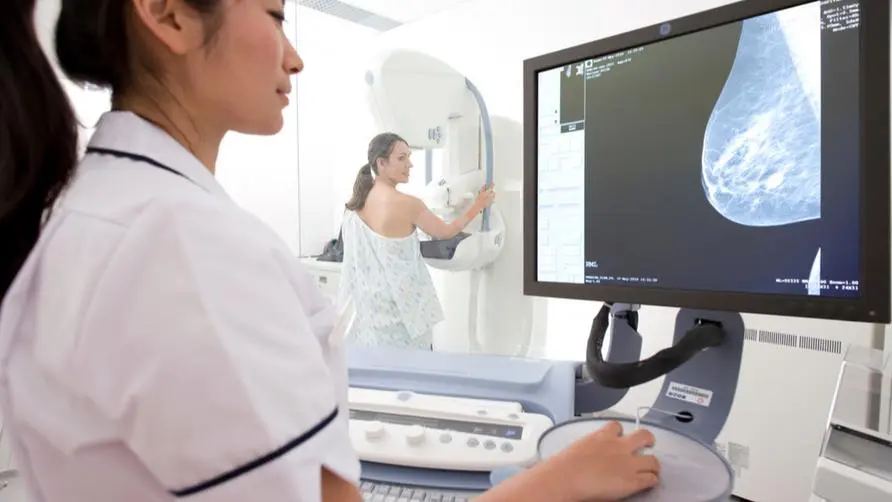The metastasis survival rate is less than 20%! Breast cancer in young people is related to obesity and prolonged sitting. Understand the 7 signs of breast abnormalities

What are the causes of breast cancer? Are you afraid of rejuvenation if you are not pregnant and sit still for a long time?
Actress Zhu Xinyi announced that she has breast cancer and has progressed to stages 2-3, which has aroused concern from all walks of life. According to statistics from the Taiwan Ministry of Health and Welfare, Health Promotion Administration, breast cancer is the most common cancer among Taiwanese women, with the peak incidence period falling between the ages of 45 and 69. Cancer registration data from the Taiwan Health Promotion Administration show that breast cancer in Taiwanese women has become younger in recent years. “Young breast cancer” between the ages of 20 and 40 accounts for 40% of the total breast cancer population. Young women are reminded not to be careless.
What are the root causes of breast cancer in women? “Harvard Health Publishing”, a direct affiliate of Harvard Medical School, pointed out that people with a family history (mother, grandmother or sister had cancer), early menarche and late menopause, radiotherapy before the age of 30, and use of estrogen replacement therapy Having breast cancer in the other breast for more than 5 years, being overweight, and drinking alcohol after menopause may increase the risk of breast cancer. Never getting pregnant or getting pregnant too late, and living a sedentary lifestyle with little exercise may be risk factors for breast cancer at a younger age.
Invasive Breast Cancer May Malignant Metastasis Discover “7 Major Signs” and Seek Medical Treatment Quickly
Breast cancer can be roughly divided into “non-invasive breast cancer” and “invasive breast cancer” based on the degree of invasion of cancer cells. According to statistics from “Harvard Health Publishing”, the publishing organization of Harvard Medical School, non-invasive breast cancer refers to cancer that has not spread through the duct wall into fat tissue. Under normal circumstances, it can be cured early and controlled.
Invasive breast cancers such as “invasive ductal carcinoma” or “invasive lobular carcinoma” account for approximately 75% and 15% of breast cancer cases respectively. Cancer cells invade adipose tissue through the duct wall or breast lobules, and metastasize to other locations via the bloodstream and lymphatic system. Women need to pay special attention to the risk of breast cancer when they notice the following changes in the appearance of their breasts:
A lump develops in the breast or armpit.
The nipple secretes clear and bloody secretions.
Nipples are scabbed or scaled.
Nipple retraction.
Breast redness or swelling.
There are depressions or protrusions on the breast skin similar to “orange peel texture”.
Changes in breast contour.
According to information from Harvard Medical School, after a tumor is confirmed by ultrasound, a further “excisional biopsy” is required to confirm whether the cancer cells are malignant, and examinations such as computed tomography and positron scan are required. , confirm whether lymph node invasion or malignant metastasis has occurred. The function of positron scanning is to find metabolically active tissue cells to determine whether cancer cells have metastasized to other locations.
Early diagnosis has a 5-year survival rate of 90% Taiwan Health Promotion Administration: Regular screening for women aged 40-69
Early diagnosis and treatment are one of the important factors that can significantly improve female breast cancer. If the tumor has not fully grown and there is no malignant metastasis, more than 90% of women can survive for 5 years or longer. However, if cancer cells spread throughout the body before diagnosis, five-year survival drops to less than 20%.
Therefore, regular mammography examination every year is a screening method that has been proven to help detect breast cancer early and improve the prognosis. The Taiwan Health Promotion Administration recommends that women over 50 years old should undergo an examination every 1-3 years to reduce breast cancer deaths by 30%; women aged 40-69 years old with a family history of breast cancer should undergo an examination every 2 years. If relevant benign changes are detected, it is recommended to follow up again within 6-12 months to prevent cancer cells from spreading and causing life threats.
Source:
Further reading:
Zhu Xinyi was diagnosed with breast cancer at the age of 35! Is breast cancer more dangerous in young people? Doctors remind you of three major risk factors
Fire sign shot? Will my old favorite “Mori Qiqi” get breast cancer? Hormone imbalance is dangerous





